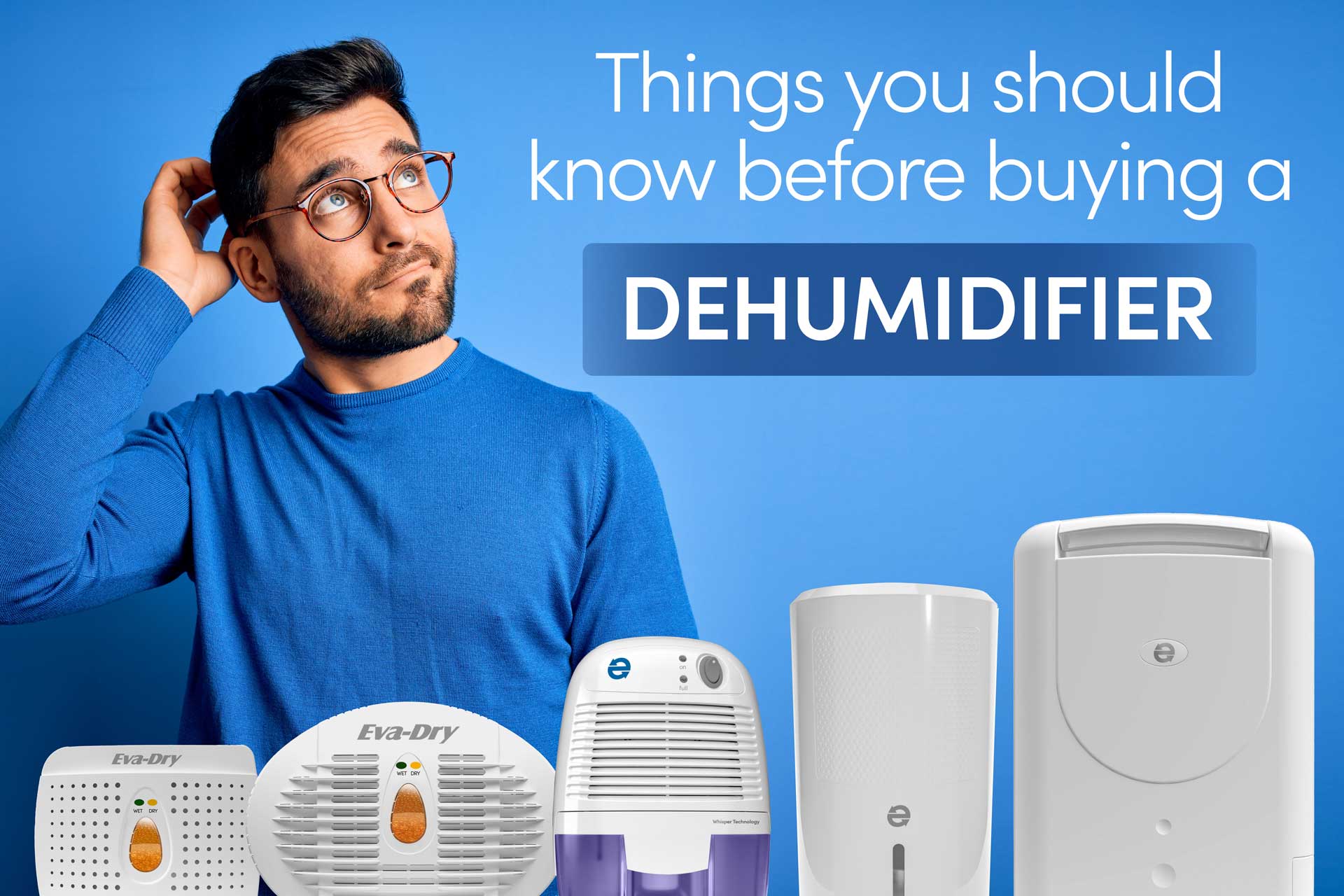
I am text block. Click edit button to change this text. Lorem ipsum dolor sit amet, consectetur adipiscing elit. Ut elit tellus, luctus nec ullamcorper mattis, pulvinar dapibus leo.
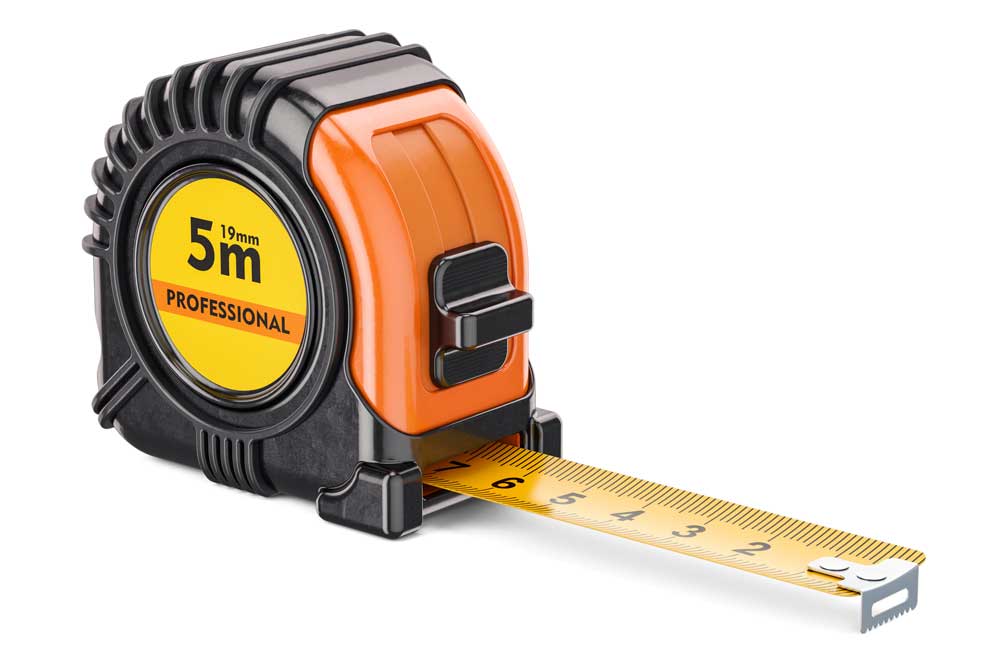
1. Find a match for your room size
Dehumidifiers come in a variety of sizes. To make sure you’re choosing the right dehumidifier for the space you have, you’ll need to consider a few things.
It’s crucial to pick an appropriately sized dehumidifier for the area you need picking one that is too small for the area, it won’t be able to reduce humidity fast enough.
It also depends on what task you want your dehumidifier to do, what kind of space you’ll be using it in. Smaller units may be perfect for a safe or cabinet but may not effectively tackle larger problems such as rising damp or larger spaces. The bigger your home or needs, the more powerful a unit you’ll need.
2. Consider humidity levels that suit you
One of the common mistakes people make with dehumidifiers is setting the humidity level wrong, or not setting it at all, so understanding humidity levels when buying a unit is important. Setting it correctly will keep your home comfortable and prevent the damaging effects excess moisture may cause.
When considering which dehumidifier to purchase it’s important to assess the humidity level in your home or specific room using a hygrometer.
Make yourself aware of the optimal humidity conditions recommended for your health or specific needs with the items you’re looking to store. This varies with each specific case, for example firearm and ammunition should be stored between 30-50% RH and silica gel renewable dehumidifiers work well for this.



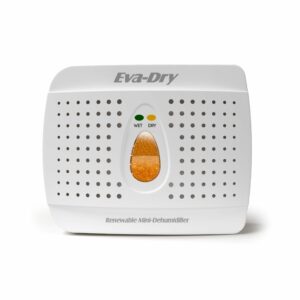
3. Technology types?
When choosing a dehumidifier they commonly come in a few types – compressor, rotary desiccant, electric Peltier, and desiccants (renewable and non). While none are a bad option, they excel in different applications.
Rotary desiccant technology units are more efficient at lower temperatures, making them suitable for unheated rooms such as garages, basements, and tiny homes/ vacation cabins. Eva-Dry’s EDV-4000 can work in temperatures down to 34°F and up to 104°F, with non-compressor-based technology making it much quieter for use in common areas within your home, as compressor dehumidifiers are commonly louder when running than rotary desiccant ones.
Electric Peltier models are great for use in spaces on the go like Boats and RVs, using much less wattage (22.5 -60 Watts) than other electrical dehumidifiers yet still packing a powerful punch to high humidity. Models like Eva-Dry’s EDV-1100 have been a top seller in these industries for over a decade.
Eva-Dry’s desiccant dehumidifiers such as the E-333 (the flagship product that started the brand) have been a non-toxic and renewable solution to calcium chloride products. Using non-toxic silica gel these units are safe near food, firearms, and pets and have no risk of spills.
4. Choose your features
While there are a lot of dehumidifier models on offer, they also come with a wide range of features to choose from. Some might have a night mode, a turbo mode, or let you control them via a smart assistant or your phone. If you have a dehumidifier that needs to run often, you’ll want to consider one that can drain into your sink or down a drain, so you’re not constantly dumping buckets of water.
Models like the EDV-4000 have an optional ionizer feature, timers, set RH% modes, as well as a nano-silver coating on the filter that helps kill bacteria. Depending on your needs, you may be considering buying a dehumidifier, an air purifier, or both. They differ in their uses with air purifiers focusing on cleaning the air, while a dehumidifier’s main task is to focus on humidity levels and removing excess moisture.
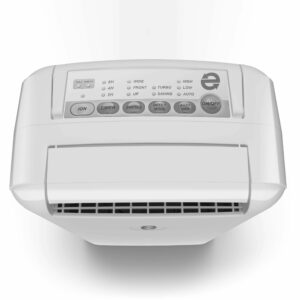
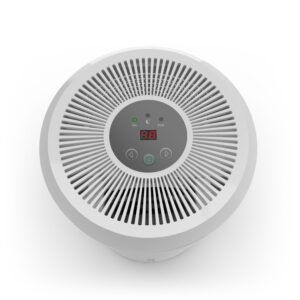

5. Consider your budget
As with any home purchase, you’ll want to consider the budget you’re looking to spend on your dehumidifier and what you can get for your price range. Before you buy a dehumidifier, it is wise to check any problems that are creating excess moisture, the most effective dehumidifier in the world will struggle if there is just too much moisture in a room.
It’s worth then considering every point on this list before spending your money to make sure you’ve got a unit that’s large enough, or small enough, for your usage needs, has the features you need, can achieve the humidity level you want, and can run in a cost-effective way to make your initial spend worth it.
6. Research Efficiency
Other factors such as considering how to clean a dehumidifier, setting up the unit correctly in the first place, and setting up the humidity levels for energy saving are all things you should look into.
When using renewable desiccant models ensure you have enough units in the area to absorb enough moisture to lower your RH% to desired levels.
While you may feel like you’re spending more initially, you may be saving money on the overall cost of your home by preventing costly damage caused by excess moisture.



